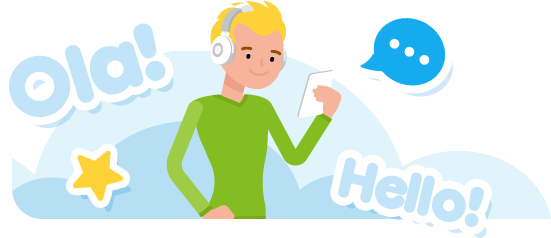
How to make a child read and understand in English
Reading in English opens up a lot of opportunities and makes teaching children much easier. Just imagine how many fairy tales are out there, how fascinating it can be to follow main characters’ stories, how much fun it brings to talk about funny situations or make your own illustrations for these stories. However, it takes time to get to this point.
So what can we do to make a child read and understand texts in English easily?
1. Get acquainted with the world of English
It’s a bad idea to start learning the alphabet before making your child interested in the language, You can watch cartoons with them (Gogo loves English, Muzzy in Gondoland, Peppa Pig), listen and sing songs (Super simple songs, Nursery rhymes), introduce new words into speaking. After you have done that, suggest listening to a song with the alphabet, painting books with letters or just find a professional teacher to do it.
Super simple songs
Nursery rhymes
English Alphabet
2. Teach the letters (not the alphabet!)
Why memorising the entire alphabet at once is not great? Because a chid is not going to need all the letters. He or she needs to understand what the letters are for. Create a situation of success. Study 3 letters (for example, ‘C’ which makes the ‘k’ sound, ‘A’ for the ‘æ’ sound and ‘T’ to represent the ‘t’ sound). And what word can a child read now? Thats right, its a cat! Colour the letters, loot at them, look for relevant videos and you will definitely make a child excited!

3. Give enough practical tasks.
It’s a very important point. You should remember that the knowledge we acquire is not eternal and our brain is not capable of storing the information for good without revision and repetition. Moreover, there are a lot of exceptions in English, diphtongues, reading rules with silent ‘E;, etc. Children simply cannot memorise all of it in a couple of lessons (well, adults experience the same problems).
4. Teach to read without translation
This method of reading does not involve a native language. The cat eats fish. To start with, you show pictures of a cat and a fish, and describe them (Who is big/small/brown?). Then we ask a child to read the sentence and show the act - to eat (use gestures and facial expressions to depict this action). And only after this we read the full sentence. This way it is possible to read the whole story without translating a single word. At the end of the lessons a teacher usually checks the understanding of the text asking simple questions in English or by assigning an interactive test.
5. Broaden child’s horizons.
To understand various texts a person should be well-rounded. Books don’t just tell us interesting stories, we also find fascinating scientific facts in them. Having some basic knowledge, it is going to be easier for a child to perceive a text in a foregn language.
It’s a long and extensive work which requites a lot of effort from a child. We always praise children and their successes, help with correcting mistakes and patiently explain all difficult moments. There is an entire course at our school designed specifically for children aged 6-12: Reading in English for children.
Some words about our course
The course allows children to work on reading skills, put knowledge into practice, memorise the words learnt and discuss a story in a group lesson. Each lesson includes speaking tasks, videos to introduce new sounds, interesting stories with good characters and a homes task to practise what has been learnt. It takes place on an interactive platform in a friendly environment, which helps a child to relax and get engaged in a lesson in a playful way!
Learn English in an interesting way, and we are here to help you!































